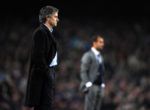The ‘high-press’ has become one of the most regularly discussed trends in football. Popularised by Guardiola’s Barcelona, and Klopp’s Dortmund, it is now a common sight to see a pundit compliment ‘good pressing’, or a fan urge his team to press higher.
As with many tactics however, there are different variations of the high press, and the blanket term can sometimes hide the true style of a team, as is the case with two of the post prominent Premier League pressers, Liverpool and Tottenham. Whilst both sides are often compared due to their pressing game, the objective and execution can be very different.
Klopp’s heavy-metal football involves his side energetically closing down the opposition, in a very structured way. Liverpool aim to win possession high up the pitch, and go straight into attack, capitalising as the opposition transitions into defence. The central-midfielders in a 4-3-3 join the attack to make a 5 man press, hurrying the opposition into blind alleys where they can win the ball quickly, and launch an attack. For Liverpool, the press is used to create chances, but is not always a viable option. In 2014/15, Klopp’s Dortmund struggled as teams allowed Dortmund to keep possession and sat deep, taking away their chance to attack during transition, and Liverpool have already struggled this season against Burnley, who used the same method.
Whilst Spurs also press in a very structured method, this is used more often to gain control than create immediate openings. Spurs pressure the opposition into clearing their lines, playing balls with a low chance of retaining possession, in order to re-gain the ball. Spurs then create a slower, more carefully planned attack, compared to Liverpool. In doing this, they can gain control of the game, with the opposition unable to push up the pitch. Spurs can then hit the opposition with constant waves of attack. This can create a similar problem to the one faced by Liverpool however- in pinning the opposition back, Spurs create a deep-block which they can sometimes struggle to break down, which may have contributed to them drawing 13 league games last year.
The way the sides line-up is custom built for their style. Liverpool have a midfield of fast, agile players with the stamina to perform lung-bursting distances at high speeds. They have more defensively focused full-backs than Tottenham, and a mobile holding-midfielder in Henderson, to sweep up in case their 5 man press is beaten. Having just 1 midfielder to sweep leaves Liverpool vulnerable if their press is overcome, reflecting the frantic nature of their side, and their scorelines under Klopp.
Tottenham meanwhile, have a team of monsters. Of the side that excelled in 2015/16, only Eriksen didn’t have an exceptional combination of speed, strength or stamina, and the summer signings of Janssen, Wanyama and Sissoko only enhance this profile. This allows Spurs to win long clearances made by the opposition, and quite literally muscle opposing teams out of possession. As the front 4 in a 4-2-3-1 press, Dembele and Dier sit in behind to sweep anything that comes through- providing a more solid base than Liverpools 1-man pivot. This in turn allows the full-backs, Rose and Walker, to advance and offer attacking width.
There is no ‘better’ method of pressing- Liverpool have been scoring goals for fun, whilst Pochettino has managed to do the impossible, and create a solid Spurs defence. Both sides have been successful in their variations of the press, and are examples of the recent influx of world-class managers into the country bringing a more varied and interesting league tactically. Their 0-0 draw at Anfield last season was one of the most fascinating tactical battles of the year, and if both sides continue to progress in their systems, could challenge for a place near the top of the most competitive Premier League table ever.









Recent Comments